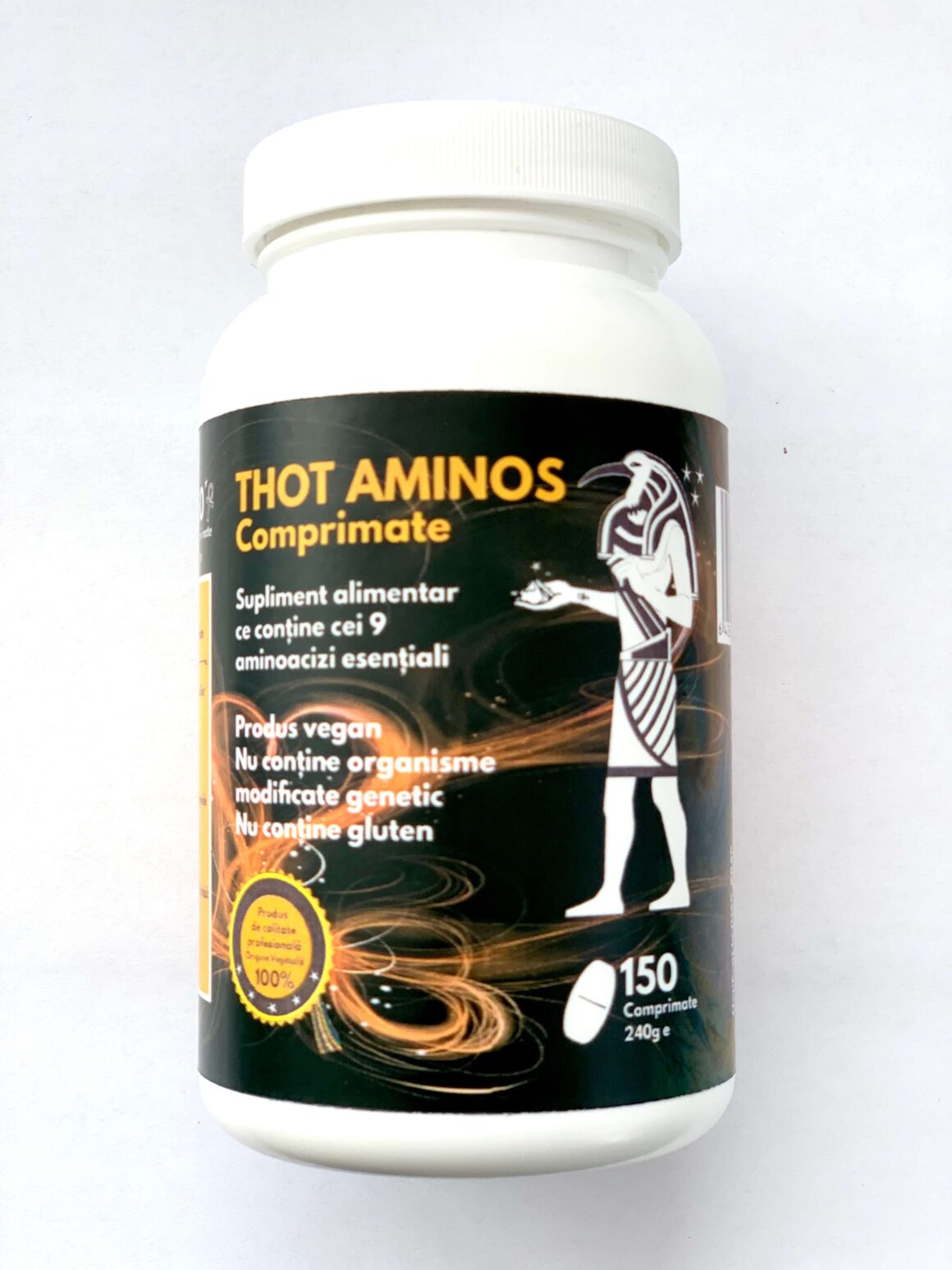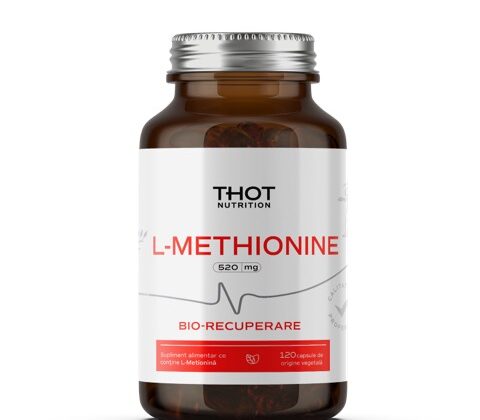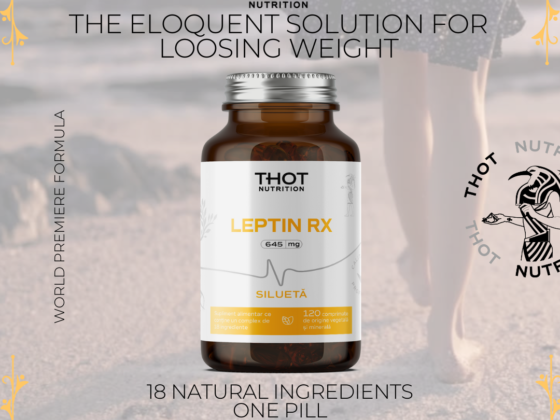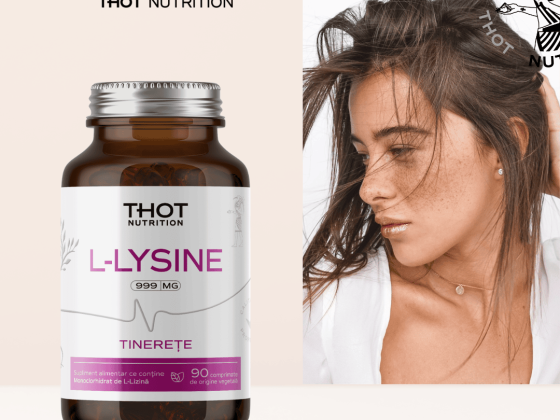Overview of the article:
- Amino acids are the building blocks of life
- There are 20 amino acids in nature, of which 9 are essential amino acids (which must be supplemented by food, because the body cannot synthesize them): L-valine, L-leucine, L-isoleucine, L-tryptophan, L-phenylalanine, L-methionine, L-lysine, L-threonine, L-histidine
- Amino acids and enzymes are the key supplements that underlie the optimal functioning of protein metabolism. It is the indispensable team for the performance of the human body.
- The quest for the perfect formula led to the best EAAs of all times: THOT AMINOS
We are far from truly understanding the importance of amino acids in health and nutrition, precisely because we do not even give them any importance.
Over the last years, nutrition has focused on fats and carbohydrates, and in terms of amino acids, we are a bit behind. Let’s see what we need to know about amino acids in order to introduce them into our diet properly.
What are amino acids?
Amino acids are organic compounds that contain in their molecule the amino groups (-NH2) and carboxyl (-COOH), the root (R) giving them specificity.
The general formula for amino acids is:
In nature, there are 20 amino acids, which through various combinations make up larger molecules, like proteins. In order for the human body to function properly, it is necessary to have ALL these amino acids.
Of the 20 amino acids, 9 are essential amino acids[1] (EAAs) (valine, leucine, isoleucine, tryptophan, phenylalanine, methionine, lysine, threonine, histidine). What exactly does that mean? It means that these essential amino acids cannot be synthesized by our body and it is necessary to take them from the diet.
Some sources say that there are just 8 essential amino acids, histidine being an essential amino acid for adults, when it can no longer be synthesized by the body. The others can be produced by our body and are called non-essential amino acids (NEAAs).
3 of the 9 EAAs are branch-chained amino acids (BCAAs): valine, leucine and isoleucine. These amino acids have a branched molecular structure, hence their name. What is also specific to these amino acids is that they are metabolized mainly in the muscles, not in the liver.
This means that without requiring too much digestion or processing, these 3 amino acids reach directly into the muscles, where they are used as a source of energy during the process of catabolism, preventing the destruction of muscles during exercise[2].
There are many BCAAs uses, including in medicine. However, recent studies confirm the fact that the single use of BCAA, without the other 6 EAAs, the benefits are considerably lower.
Why do we need AMINO ACIDS?
The reality is that we are all deficient in amino acids. For the curious people, there are test panels for amino acid deficiencies[3].
Amino acids are used for protein synthesis. Proteins are really the molecules that keep our body alive and running. Life would not exist without proteins. And life thrives when we have the right proteins. Most people believe that it is proteins that we need to take out from our diet. I love to break it to you: it’s not proteins, it’s an amino-acids that we need.
The body cannot absorb proteins. They are digested by enzymes and broken down into amino acids. They are absorbed and used to build the right proteins for the human body. I repeat. It’s the amino acids that we need.
When it comes to protein, most people think of muscle protein. OK, it’s good to know that muscles are made up of a lot of protein, but protein plays a much more important role than just being the building blocks for muscles. They don’t just act as a structure. All the functions of the body would not take place without amino acids.
Proteins are the molecules which are used to actually and physically express the information encoded in our DNA. How does that happen? Well, the information encoded in our genes is passed on to mRNA in a process called transcription. Then, based on the information now contained by mRNA, with the help of tRNA and using amino acids, the specific protein is synthesized in a process called translation. Basically, for every gene, there is a correspondent protein.
You can watch a short animation of how the information gets from DNA to proteins here. But (and this is a big but!) there is more: as epigenetic („above genetics”) takes the lead over genetics, the membrane and chromosomal proteins got the attention of scientists. They appear to be the regulatory proteins which regulate the expression of DNA and not the other way around. It turns out that, as Dr. Lipton describes in his article, DNA is not at the top of the chain of command, but proteins are[4].
Each protein has specific instruction regarding what it is designed to do in the body. So, let’s se some of the most important protein roles:
- First of all, proteins have a STRUCTURAL role. Being part of the cell membrane structure of every cell of the body is enough to be said about this.
- Secondly, proteins have a FUNCTIONAL role. This is by far the most complex and important role of them all. This means that each one of the synthetized proteins has a specific function and that, without a flawless activity, harmoniously intertwined with all the other ones, the whole organism has a very good chance of collapsing altogether, in time. The main functional roles of proteins are:
- Catalytic: this role is provided by a group of proteins named ENZYMES. Enzymes are both digestive and metabolic. They are the nanorobots which take care that every metabolic reaction from or body will happen.
- Regulatory: this role is offered by HORMONES. Yes, hormones have a protein structure. They help the nervous system to communicate the information and give instructions to the whole body.
- Immune: ANTIBODIES like immunoglobulins are proteins. They are the ones involved in the immune response regarding a foreign agent.
- Transport: proteins like hemoglobin transports O2 or CO2 to and from the tissues. It goes the same for ferritin, which transports the iron.
- Balance: they help maintaining pH and osmotic homeostasis throughout the body.
- Communication: signaling proteins like insulin tell the cells that there is some glucose that has to go inside them
- Contractility: proteins like actin in the muscle helps in muscle contraction
- Others
- Thirdly, proteins can have an ENERGETIC role. This happens in exceptional situations. The body uses carbohydrates and fats and only when this two are depleted, protein is then considered an energy source.
Without these processes in the body, we would practically not be “alive”, life would not take place, we would be just a body and … and that’s it. Amino acids are THAT important … you wouldn’t say that, would you? Especially ESSENTIAL amino acids.
Why ESSENTIAL Amino Acids?
As I’ve already mentioned above, essential amino acids are those 9 amino acids that the human body, in the evolutionary process, has lost the genetic ability to synthetize. Therefore, they need to be supplemented from an outside source.
These are the 9 essential amino acids – their roles in the human body:
- L-Leucine – stimulates muscle protein synthesis, being directly involved in the functions of anabolism or body growth and development[5].
- L-Lysine – is involved in the most important regulatory processes like gene expression, cellular metabolism and protein stability. Practically, L-Lysine is the key to epigenetics[6] and is essential in longevity and regeneration.
- L-Isoleucine – is an important regulator of blood sugar, muscle repair and energy regulation[7].
- L-Valine – is both an EAA and a BCAA. It is needed for muscle, tissue repair and maintaining an optimal level of nitrogen in the body. Along with leucine and isoleucine, it helps protect muscle tissue[8].
- L-Threonine – is important for the production of antibodies, for the immune system and can be converted to glycine and serine. It also contributes to the synthesis of collagen, elastin and tooth enamel and helps in liver metabolism[9].
- L-Phenylalanine – stimulates the synthesis and release of neurotransmitters and hormones such as dopamine and norepinephrine, substances necessary for the optimal activity of the Central Nervous System and the Peripheral Nervous System. They are basically the two neurotransmitters that make us “feel good” and get over an intense pain or an unpleasant event more easily[10].
- L-Methionine – provides the body with sulfur – sulfur is very important in the synthesis of glutathione – the most powerful antioxidant in the body, the synthesis of cysteine, taurine, as well as other compounds necessary for optimal functioning, growth and regeneration, detoxification[11].
- L-Histidine – previously considered non-essential for adults, histidine is involved in important mechanisms involving the immune, inflammatory and digestive systems. It is a precursor for a powerful antioxidant and for an effective UV light protector[12].
- L-Tryptophan – helps release basic neurotransmitters, hormones for well-being and sleep. Examples include serotonin (the “hormone of happiness”) and melatonin (the hormone that regulates the sleep-wake cycle)[13].
Of the nine amino acids, the ones that gained special attention over time are L-leucine and L-histidine. The first one is now scientifically proven to be the most important essential amino acid involved in muscle synthesis, improving performance and recovery. The latter, L-histidine, long time debated if it is or not essential, today it is, again, scientifically proven to be an EAA for both kids and adults.
L-leucine, apart from muscle protein synthesis, is known for regulating the production of anabolic endocrine hormones, for stimulating insulin and enhancing the uptake of other amino acids in this process, as well as for modulating the mTOR pathway. Dr. Rhonda Patrick, in this interview with Dr. Peter Attia, provides useful and clear information on the subject.
L-histidine, among the already mentioned benefit, it is shown to slow down the protein turnover[14]. That means that proteins stay younger and functional for a longer period of time and don’t need to be recycled as often as in a L-histidine deficiency, so the body can focus on more important issues than recycling proteins. For more benefits of L-histidine, read this article.
Between the two categories, there are also the ones known as “conditionally essential”. They are normally non-essential, but, under certain circumstances, they become essential. This is the case for L-Tyrosine, which becomes essential for people who lack the enzyme that produces this non-essential amino acid from the essential one, L-Phenylalanine.
Given the multiple roles of each EAA in particular and all together, it can be said that EAAs are good for literally everything. Moreover, their lack in one’s diet can most probably lead to serious health problems, imbalances and other issues[15].
The benefits of essential amino acids supplementation include:
- Improved sport performance and rapid recovery
- Cognitive enhancement and focus
- Anti-aging benefits
- Prevents burnout
- Helps sustain an active lifestyle[16]
- Improves mood and mental imbalances
- Accelerated wound healing
- Improved gut health
- Healthy skin
- Improved sight
- Healthy bones and ligaments
- AND MORE…
Amino Acids and Enzymes – the love-hate relationship
We need amino acids, not protein
Bralgei Shackry
Not just any amino acids. Essential, bioavailable, left-packed
We need amino acids to build protein, which we also get from protein. But … Man doesn’t eat protein. Only amino acids pass into the blood. Proteins are far too large; they are macromolecules made up of an average of 20-50,000 amino acids. The digestive system needs to break them down using acids and enzymes. If you have no enzymes, you don’t absorb amino acids. If you have no amino acids, you don’t make enzymes.
This is one of the most vicious and destructive nutritional cyclesthat causes the biggest problems, given that the solid part of the body is composed of over 50% of amino acids. Bone is 40% calcium and other elements, and 60% collagen and elastin, which are all amino acids.
The cyclic problem is due to poor processing and absorption of amino acids from proteins.
The secret lies in the concentration of enzymes.
Many years ago, when I was doing my bachelor’s thesis, I discovered that, after the age of 20-25, people have increasingly weaker enzymes in concentration. Intrinsically, the body’s ability to extract essential or non-essential amino acids is progressively diminished, which is reflected in a declining concentration of enzymes. Surprise: digestion is getting worse and worse, and more and more problems rise for the simple reason that the body has no tools for its repair, regeneration and detoxification.
And this is not all.
Let’s say the source of protein or meat is extremely good, which is not very common. The genetics of the animal, how it lived, where, what it ate (grass or fodder, etc.) how the animal was slaughtered, how the meat was processed, what pH it has, what information it contains matter. It all matters if you aim for details, but don’t be grumpy.
The protein has reached the body and is beginning to be broken down. IF you have enzymes. Let’s say we have everything, we have enzymes, we have good meat, we also have acids, but before they are absorbed or used by cells, amino acids from proteins must be folded.
What the hell is that? Yes. The amino acid chains are being folded. If they are folded to the left, the work that some heat shock proteins do is properly done and everything is wonderful. The amino acids on the left are called, for example: L-Arginine. They can be used by cells to build what is needed.
But… if the amino acids are wrongly folded to the right, what do you think happens?
When they reach the cells, the cells look at them, see that they are right-folded and the cells cannot use them. Then they are broken down, resulting nitrogen and sugar.
Surprise. You can eat only meat and half of it will turn into sugar because it does not have the correct configuration. And we wonder why there is so much sugar in the body.
In this interview hosted by Ben Greenfield, Dr. David Minkoff explains pretty well this amino acid – enzyme relationship.
The protein source matters. Enzymes matter. Water matters. It all matters if you want balance.
Amino acids are important. Especially the essentials ones, that the human body does not produce. They need to be assimilated from the outside. The secret is that, if you have enough of these, you have no problem. I am a living example who has not eaten meat for 30 years. I ate other forms of protein, but I was careful to cultivate my essential enzymes and essential amino acids. It’s science, not luck. It’s knowledge, not good genes.
I hope that now you realize how big the real nutritional deficiencies are in terms of amino acids, given that enzymes, hormones, neurotransmitters are built from amino acids and so on.
I believe the reasons why I recommend EAA supplementation over food protein are pretty obvious right now.
The Quest for The Perfect Formula
If it were for me to choose one term that defines a perfect formula, it would be… BALANCE. As I have experienced life as deep as possible, everything in every domain brought me back to the same thing, the only one that seemed to last through time: the middle way.
Finding the middle way is hard and tricky. Staying on it is… the supreme quest. The secret is that… the middle is never the same. It moves, it ADAPTS. Now, in terms of essential amino acids, we needed a formula adapted to our times, without forgetting the roots. With the use of the latest technology and data, we can put ancient knowledge in a pill and call it magic.
As everything matters, the focus is on quality, working hard to make the best there is. Top professional ingredients, complete range of EAAs, the perfect proportion, plant based, neutral taste, the best absorption and utilization there is, time adapted. This is how THOT AMINOS were created.

Beter absorption
Faster muscles
Less effort &
Excelent recovery
all 9 essential ortho-molecular amino acids
We use state of the art, profesional grade essential amino acids
with best nutrition proportion formula in the world
Supplementing with Essential Amino Acids
There are a bunch of sources that provide the EAAs that we absolutely need for a proper development, functioning and recovery. I recommend you to listen to Ben Greenfield’s podcast with Angelo Keely for a more detailed perspective over amino acid sources. I will summarize here a part of it.
Food
Starting with food sources, they are found in both plant and animal sources, each with its own advantages and disadvantages.
The quality of animal-based protein sources is now ranked by using Digestible Indispensable Amino Acid Score (DIAAS) as opposed to Protein digestibility corrected amino acid score (PDCAAS), which was used before. When it comes to animal protein, organ meats are at the top, followed by chicken and including dairy at the low end.
Plant based protein has soy at the top (tempeh, natto, fermented tofu) followed by other sources like pea protein, spirulina, quinoa, millet and hemp.
Protein powders
Then there are protein powders. My oh my. And there are a lots of them.
Basically, if it’s vegan, it has to be a mix in order to have the complete profile of the nine EAAs.
As for the animal sources, whey appears to be the favorite and to have passed the test of time, being used for thousands of years, including for medical uses. However, whey only provides a percentage of 50% protein. Therefore, there were developed different whey powders, like concentrate (providing 80% protein with good taste), isolate (providing 90% protein and low on fat and carbohydrates) and hydrolysate (providing 99% protein, with awful taste).
Amino acid powders and tablets/capsules.
EAA
NEAA
BCAA
Mixtures
In a consumer-type society and information overload, choosing a truly clean and effective product without any compromise has become the highest challenge there is in this field. And I am thinking performance, not survival. Whether we talk about physical performance or cognitive performance, performance is performance. To get performance, you got to get the best of the best.
Long story short, YOU NEED THE PERFECT BLEND OF TOP QUALITY EAAs, nothing more (like NEAAs), nothing less (like BCAAs). Everything added or removed, every compromise regarding the source, the ingredients, the production process, will reflect in your performance. I have nothing else to add to this statement, as it is pretty clear.
Thot nutrition, via THOT AMINOS, fulfills the most exigent request anyone can have from a essential amino acid supplement.
You can find a very good guides regarding the usage of EAAs (dosage, timing and more). However, the special thing about THOT AMINOS is that they are so effective, that you need to take 3-5 tablets/day, due to high density form, purity and absorption qualities.
Moreover, the highest quality ingredients allowed us to develop a supplement with almost neutral taste, making the intake an enjoyable pleasure accompanied by tangible results.
There is not much left to say.
But there’s a lot to do and try.
Make sure you choose the best for yourself! Stay tuned.
Resources:
[1] https://www.ncbi.nlm.nih.gov/books/NBK557845/
[2]https://www.ncbi.nlm.nih.gov/pubmed/16424141
[3]https://www.directlabs.com/bengreenfield/Home/tabid/21020/language/en-US/Default.aspx
[4] https://www.ncbi.nlm.nih.gov/pmc/articles/PMC6438088/
[5]https://pubchem.ncbi.nlm.nih.gov/compound/L-leucine
[6]https://www.ncbi.nlm.nih.gov/labs/pmc/articles/PMC6609103/
[7]https://pubchem.ncbi.nlm.nih.gov/compound/l-isoleucine
[8]https://pubchem.ncbi.nlm.nih.gov/compound/L-valine
[9]https://pubchem.ncbi.nlm.nih.gov/compound/L-threonine
[10]https://pubchem.ncbi.nlm.nih.gov/compound/L-phenylalanine#section=3D-Conformer
[11]https://pubchem.ncbi.nlm.nih.gov/compound/L-methionine
[12] https://www.ncbi.nlm.nih.gov/pmc/articles/PMC7527268/
[13]https://pubchem.ncbi.nlm.nih.gov/compound/L-tryptophan
[14] https://www.ncbi.nlm.nih.gov/labs/pmc/articles/PMC7284872/
[15] https://www.ncbi.nlm.nih.gov/pmc/articles/PMC6247364/
[16] https://www.ncbi.nlm.nih.gov/labs/pmc/articles/PMC3854183/








